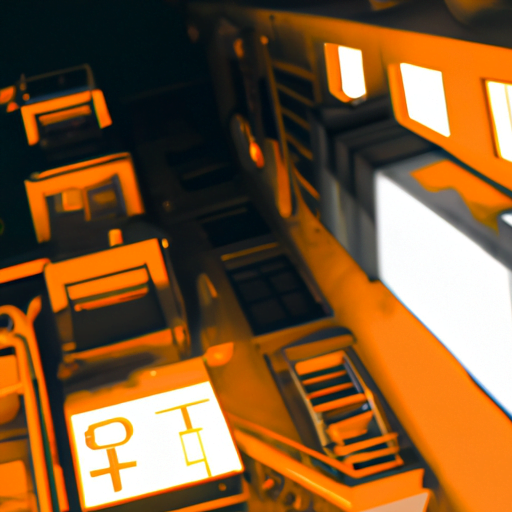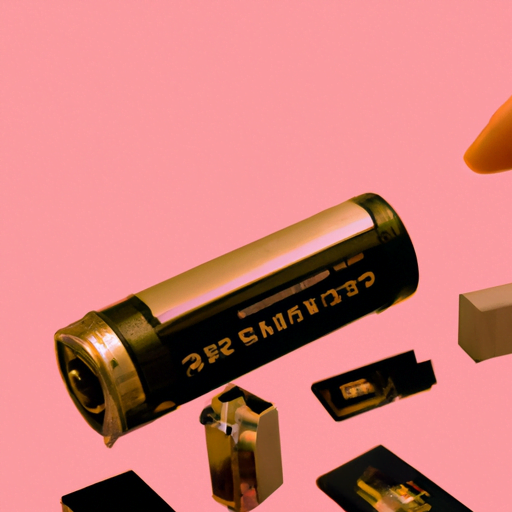
-
Table of Contents
- Cyberpunk Aesthetics: Designing for a Futuristic Dystopia
- The Origins of Cyberpunk
- The Visual Language of Cyberpunk
- Neon Lights and Dystopian Cityscapes
- Cybernetic Enhancements and Augmented Reality
- High-Tech Fashion and Subcultures
- Designing for a Cyberpunk Dystopia
- Case Study: Cyberpunk 2077
- Conclusion
Cyberpunk Aesthetics: Designing for a Futuristic Dystopia

The cyberpunk genre has captivated audiences for decades with its unique blend of futuristic technology, gritty urban landscapes, and dystopian societies. From movies like Blade Runner to video games like Cyberpunk 2077, the cyberpunk aesthetic has become a visual representation of a dark and chaotic future. In this article, we will explore the key elements of cyberpunk aesthetics and how designers can incorporate them into their work to create compelling and immersive experiences.
The Origins of Cyberpunk
Cyberpunk emerged as a subgenre of science fiction in the 1980s, influenced by the rapid advancement of technology and the growing concerns about its impact on society. The term “cyberpunk” was coined by writer Bruce Bethke in his 1980 short story of the same name. It combines “cybernetics,” referring to the fusion of humans and machines, and “punk,” representing the countercultural and rebellious nature of the genre.
Cyberpunk literature, such as William Gibson’s Neuromancer, popularized the genre and introduced many of its defining characteristics. These include a dystopian future, megacorporations with immense power, advanced technology, and a marginalized underclass struggling to survive in a high-tech world.
The Visual Language of Cyberpunk
The cyberpunk aesthetic is characterized by a distinct visual language that reflects the genre’s themes and atmosphere. Designers can draw inspiration from these elements to create immersive experiences that transport users into a futuristic dystopia.
Neon Lights and Dystopian Cityscapes
One of the most iconic features of cyberpunk aesthetics is the use of neon lights and futuristic cityscapes. These elements create a sense of a sprawling metropolis, often with towering skyscrapers, crowded streets, and a constant buzz of activity. The neon lights, with their vibrant colors and flickering glow, add a layer of visual interest and create a stark contrast against the dark and gritty backdrop.
For example, the movie Blade Runner is renowned for its depiction of a dystopian Los Angeles in the year 2019. The city is bathed in neon lights, casting an otherworldly glow on the rain-soaked streets and dilapidated buildings. This visual style has become synonymous with cyberpunk and has been emulated in various forms of media.
Cybernetic Enhancements and Augmented Reality
In a cyberpunk world, humans and machines are intertwined, blurring the boundaries between the physical and digital realms. Cybernetic enhancements, such as robotic limbs or neural implants, are common in this futuristic setting. Designers can incorporate these elements into their work by creating futuristic interfaces, HUDs (Heads-Up Displays), and augmented reality experiences.
An excellent example of this is the video game Deus Ex: Human Revolution. The game’s protagonist, Adam Jensen, is equipped with cybernetic augmentations that enhance his abilities. The game’s user interface reflects this cybernetic theme, with a sleek and futuristic design that overlays information onto the player’s view.
High-Tech Fashion and Subcultures
Cyberpunk fashion is a fusion of high-tech and streetwear, often characterized by bold colors, unconventional materials, and futuristic designs. This style reflects the rebellious nature of the genre and the countercultural movements within its dystopian societies.
Designers can incorporate cyberpunk fashion into their work by creating visually striking characters or incorporating futuristic clothing and accessories into their designs. This can help establish the setting and immerse users in the cyberpunk world.
Designing for a Cyberpunk Dystopia
When designing for a cyberpunk dystopia, it is essential to consider the following principles to create a compelling and immersive experience:
- Embrace the Contrast: Cyberpunk aesthetics thrive on the contrast between high-tech and low-life. Incorporate elements of advanced technology alongside gritty and decaying environments to create a visually striking contrast.
- Create a Sense of Scale: Use towering skyscrapers, expansive cityscapes, and crowded streets to convey the vastness and density of the cyberpunk world.
- Use Neon Colors and Lighting: Neon lights and vibrant colors are synonymous with cyberpunk aesthetics. Incorporate them into your designs to create a visually captivating experience.
- Integrate Futuristic Interfaces: Design futuristic interfaces and HUDs that reflect the cybernetic enhancements and augmented reality prevalent in the genre.
- Explore Subcultures and Fashion: Incorporate cyberpunk fashion and subcultures into your designs to add depth and authenticity to the world you are creating.
Case Study: Cyberpunk 2077
Cyberpunk 2077, developed by CD Projekt Red, is a highly anticipated video game that exemplifies the cyberpunk aesthetic. The game is set in Night City, a sprawling metropolis filled with neon lights, towering skyscrapers, and a diverse cast of characters.
The developers meticulously crafted the world of Cyberpunk 2077, drawing inspiration from classic cyberpunk literature and movies. They created a visually stunning and immersive experience by incorporating the key elements of cyberpunk aesthetics into the game’s design.
The game’s user interface reflects the cybernetic theme, with futuristic HUDs and augmented reality elements seamlessly integrated into the gameplay. The attention to detail in the city’s design, from the neon-lit streets to the bustling markets, creates a sense of immersion and authenticity.
Conclusion
The cyberpunk aesthetic offers designers a unique opportunity to create immersive and visually captivating experiences. By incorporating elements such as neon lights, dystopian cityscapes, cybernetic enhancements, and high-tech fashion, designers can transport users into a futuristic dystopia.
When designing for a cyberpunk world, it is crucial to embrace the contrast between high-tech and low-life, create a sense of scale, use neon colors and lighting, integrate futuristic interfaces, and explore subcultures and fashion. By following these principles and drawing inspiration from successful examples like Cyberpunk 2077, designers can create compelling and memorable experiences that transport users to a dystopian future.
